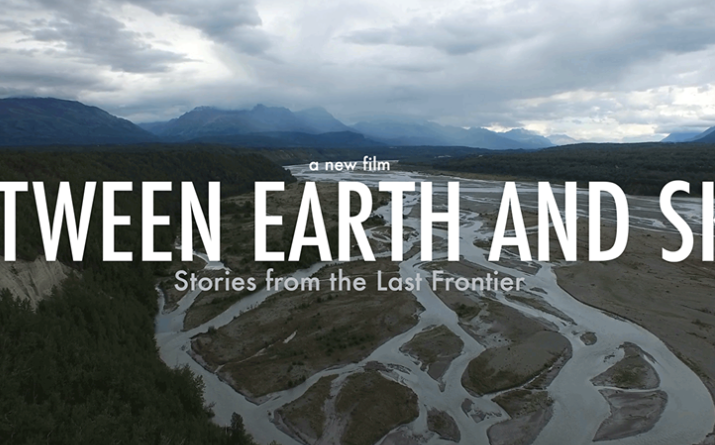Film Review: “Between Earth and Sky: Climate Change on the Last Frontier”
Article by Anne Joost
“Between Earth and Sky: Climate Change on the Last Frontier”, directed by EMMY award winning director Paul Allen Hunton, is a documentary about the effects that climate change has on Alaska, its native population, glaciers and the arctic soil. The documentary premiered nationally at the Wilson Center in Washington DC as part of the 25th Environmental Film Festival on March 15th, 2017. The screening was followed by a discussion with Executive Producer David Weindorf, Producer Austin Wideman, Scientist Lorene Lynn and Moderator Michael Sfraga.
The documentary was particularly powerful in capturing the undeniable effects climate change has on people and the soil in Alaska. After all, this northern state has experienced an average increase of 3 degrees F since 1949, according to the Alaska Climate Research Center.
Climate change is threatening the lifestyle of Alaskan natives, their traditions, their culture. The documentary describes the life of the Inupiaq people on the island of Shishmaref. This island has been home to this people for thousands of years, but sea ice retreat and increase in coastal storms are eating away on the shores of the island. The youth of this small village is fighting to keep their town and culture alive. In 2015, Esau Sinnok traveled to Paris for the United Nations Climate Change Conference to raise awareness for the Shishmaref’s fate. For this village life is a day to day struggle, and there seems to be little that can be done to improve the situation. Relocation of the village would cost 200 million dollars. Shishmaref is not the only community threatened to be swallowed up by the ocean.
The documentary also portrays the work of, now retired, Soil Scientist Dr. Chien-Lu Ping. He was professor of Soil Science at the University of Alaska Fairbanks from 1993-2015. His most important work, however, was completed outside the classroom. For 23 years he took hundreds of students and professionals on a soil tour through Alaska, from Fairbanks to Prudhoe Bay. He has changed the way these individuals look at and think about soil. Lorene Lynn is one of these individuals. She is now a soil scientist and restoration ecologist and admitted that Dr. Chien-Lu Ping and his passion are an inspiration to her. She went on his arctic soil tour twice. In Alaska soil scientists analyze melting of permafrost. The Arctic and Subarctic region hold 40% of Earth’s soil carbon. The melting of this permafrost due to climate change acts as a positive feedback, furthering increase in temperatures.
One observation was particularly striking. “Soil is our most important natural resource”, as David Weindorf remarked. Most people think of oil or natural gas being the United States’ most important resource. However, we need fertile soil to grow food. It is the basis for a healthy environment. Unfortunately, we pay way too little attention to this resource. Melting of permafrost does not just contribute to the development of a positive feedback loop, but it changes soil composition and contributes to land subsidence. The importance of this documentary lies in the portrayal of observable and current effects of climate change. These effects will not remain in the upper 48, but are already advancing into the lower 48. Soil scientist Lorene Lynn offered a great observation during the post screening discussion: “We need an emotional connection to science to further understanding of climate change.” Unfortunately, there is still disagreement and disbelief about the effects of climate change. Documentaries such as this one are necessary.
For more information and to watch the trailer, please visit: http://betweenearthandskymovie.com/

